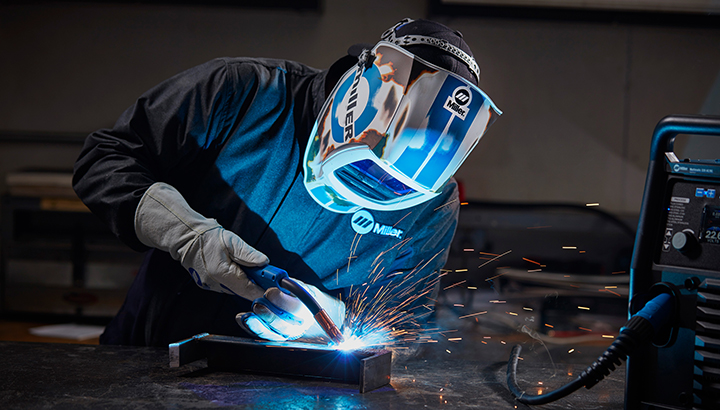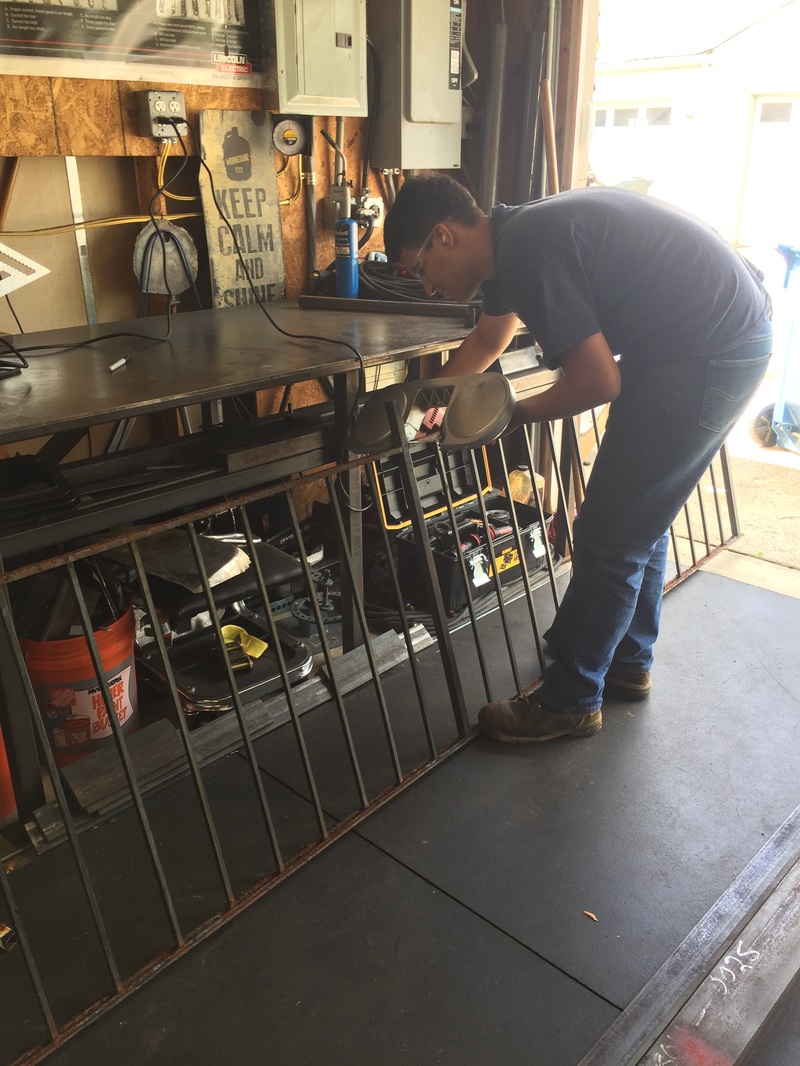Usual Welding Repair Service Issues and How to Address Them Efficiently
Welding fixings usually run into a variety of issues that can endanger the stability of the end product. Common problems consist of insufficient penetration, porosity, and imbalance, to name a few. Each problem offers special difficulties that call for specific approaches for resolution. Comprehending these problems is important for welders aiming to enhance their abilities and results. This discussion will discover these typical welding repair concerns and effective techniques to resolve them.
Inadequate Infiltration
Poor penetration takes place when the weld metal falls short to fully fuse with the base material, leading to weak joints and possible architectural failures. This concern frequently comes from insufficient heat input, incorrect electrode angle, or inappropriate welding speed. Welders may encounter inadequate infiltration due to a mistake of the needed criteria for a details product density or kind. In addition, contamination on the base product's surface area can prevent efficient bonding, aggravating the problem. To address insufficient penetration, welders ought to guarantee proper settings on their tools and preserve a clean job surface area. Normal inspection of welds is suggested to determine any type of deficiencies early, permitting for prompt modifications and the prevention of endangered structural integrity in bonded assemblies.
Porosity
Porosity is an usual issue in bonded joints that materializes as small gas bubbles trapped within the weld metal. This flaw can endanger the integrity of the weld, leading to lowered strength and prospective failing under stress and anxiety. Montana Mobile Welding and Repair Belgrade Fabrication. Porosity generally develops from contamination, wetness, or inappropriate welding methods, which enable gases to leave right into the liquified weld swimming pool. To deal with porosity, welders ought to assure correct surface prep work, maintain a clean workplace, and use appropriate welding parameters. Additionally, choosing the ideal filler product and shielding gas can minimize gas entrapment. Normal inspection and testing of welds can help identify porosity early, ensuring prompt restorative activities are taken, consequently maintaining the top quality and integrity of the welded structure
Imbalance
Misalignment in welding can emerge from numerous elements, consisting of improper setup and thermal growth. Comprehending the source is essential for effective resolution. A number of improvement strategies are available to straighten components and assure structural honesty.
Reasons for Misalignment
Welding imbalance usually originates from a selection of underlying concerns that can compromise architectural stability. One key cause is inappropriate fit-up of components before welding, which can cause spaces and uneven surfaces. Variations in thermal expansion throughout the welding procedure can likewise lead to distortion, particularly if the products being joined have various coefficients of development. Furthermore, inadequate fixturing and clamping may fail to hold parts firmly in place, causing movement during welding. Inadequately conserved devices, consisting of welding devices and devices, may introduce disparities in the weld bead, more adding to imbalance. Finally, driver error, coming from inadequate training or experience, can likewise play a considerable duty in developing misaligned welds.
Improvement Techniques Readily Available
Resolving imbalance successfully requires a mix of rehabilitative strategies customized to the specific problems handy. One usual method is making use of jigs or fixtures to hold components in the appropriate placement during welding, guaranteeing consistent placement. In addition, pre-heating the products can aid reduce distortion and enhance fit-up. For substantial imbalance, mechanical realignment strategies, such as utilizing hydraulic jacks or clamps, can be employed to deal with the placement before welding. Post-weld warm therapy might likewise be essential to relieve tensions triggered by misalignment. Cautious inspection and adjustment throughout the setup stage can prevent imbalance concerns from coming to be considerable troubles, advertising a smoother welding process and boosting total architectural integrity.
Distortion
Distortion is a common challenge in welding that can emerge from different elements, including uneven heating and air conditioning. Understanding the root causes of distortion is crucial for executing efficient avoidance techniques. Addressing this problem not only enhances structural integrity yet likewise enhances the total high quality of the weld.
Sources of Distortion
When based on the extreme heat of welding, products typically undergo adjustments that can lead to distortion. This phenomenon largely emerges from thermal development and contraction during the welding process. As the weld location warms up, the product expands; upon cooling, it acquires, which can develop interior stress and anxieties. In enhancement, unequal home heating across a work surface can worsen these stresses, leading to warping or bending. The kind of material also plays a considerable role; steels with differing thermal conductivity and coefficients of growth may react in a different way, bring about unforeseeable distortions. Moreover, inadequate joint layout and poor fixturing can add to imbalance throughout welding, boosting the chance of distortion. Recognizing these reasons is necessary for effective welding repair and avoidance strategies.
Prevention Techniques
Effective prevention strategies for distortion throughout welding focus on controlling warm input and ensuring correct joint layout. Preserving a constant heat input aids to reduce thermal expansion and tightening, which can cause distortion. Utilizing techniques such as pre-heating the workpiece can also lower the temperature gradient, promoting uniform heating. Furthermore, picking appropriate joint layouts, such as T-joints or lap joints, can boost security and reduce tension focus. Carrying out proper fixturing to safeguard the work surfaces in location further help in maintaining positioning during the welding process. Finally, staggered welding series can distribute heat extra equally, avoiding local distortion. By using these techniques, welders can substantially reduce the probability of distortion and improve the general quality of their welds.
Splitting
Splitting is a typical issue experienced in welding fixings, commonly resulting from different aspects such as improper air conditioning prices, product choice, or insufficient joint prep work. The event of fractures can substantially endanger the stability of the weld, resulting in potential failings throughout procedure. To resolve this issue, welders must first assess the origin, making sure that products are compatible and appropriately selected for the details application. Furthermore, controlling the air conditioning price throughout the welding procedure is vital; quick cooling can induce stress and anxiety and result in breaking. Correct joint layout and preparation also add to decreasing the threat. Executing these approaches can enhance weld high quality and toughness, inevitably decreasing the likelihood of splitting in finished weldments.

Incomplete Blend
A significant problem in welding fixings is incomplete blend, which occurs when the weld steel does not effectively bond with the base material or previous weld passes - Montana Mobile Welding and Repair Welding. This flaw can lead to weak points in the joint, potentially compromising the stability of the welded structure. Factors adding to incomplete blend consist of inadequate warmth input, inappropriate welding strategy, and contamination of the surface areas being joined. To address this problem successfully, welders ought to assure proper pre-weld cleansing and surface preparation, as well as readjust their welding specifications to achieve appropriate infiltration and combination. Routine inspection throughout the welding procedure can additionally aid determine incomplete combination early, enabling for prompt corrective measures to boost the general quality of the weld
Overheating
While welding repairs can enhance structural stability, overheating presents a significant difficulty that can bring about product deterioration. Too much heat during welding can change the mechanical homes of metals, causing minimized strength, boosted brittleness, and bending. This phenomenon is especially essential in high-stress applications where structural integrity is paramount. Determining getting too hot can include visual assessments for staining or distortion, along with checking temperature throughout the welding process. To minimize the threats related to getting too hot, welders ought to utilize ideal methods, such as regulating heat input, adjusting travel speed, and making use of ideal filler materials. Furthermore, implementing pre- and post-weld warmth treatments can aid bring back product residential properties and improve the total top quality of the repair work, making certain lasting efficiency and safety and security.
Regularly Asked Concerns
What Are the Usual Signs of a Welding Flaw?

How Can I Test My Welds for Top quality?
To check welds for high quality, one can use visual evaluations, ultrasonic testing, and radiographic methods. Each technique guarantees architectural honesty, identifies flaws, and verifies adherence to defined criteria, inevitably enhancing the dependability of the bonded joints.
What Safety and security Preventative Measures Should I Take While Welding?
When welding, one must focus on safety and security by using appropriate individual protective tools, making sure appropriate ventilation, protecting flammable products away, maintaining a tidy work space, and knowing surroundings to avoid injuries and mishaps.
Can I Repair a Weld Without Remodeling the Entire Joint?
Repairing a weld without redoing the entire joint is feasible, depending on the damage (Montana Mobile Welding and Repair Welding). Techniques such as grinding, adding filler material, or using a welding procedure can successfully attend to specific problems while preserving the surrounding framework
What Tools Are Necessary for Efficient Welding Repair Works?
Essential tools for efficient welding repair services include a welding machine, cable brush, mill, safety equipment, clamps, and filler products. Each website device plays an essential role in making certain quality and security during the fixing process. Porosity normally develops from contamination, moisture, or improper welding techniques, which enable gases to escape into the molten weld pool. Poorly maintained devices, including welding devices and tools, may present variances in the weld grain, additional contributing to imbalance. When subjected to the intense warmth of welding, products commonly undergo modifications that can lead to distortion. Cracking is a typical concern encountered in welding repair services, usually resulting from various factors such as improper air conditioning rates, product selection, or poor joint prep work. A significant concern in welding fixings is insufficient blend, which takes place when the weld metal does not properly bond with the base material or previous weld passes.